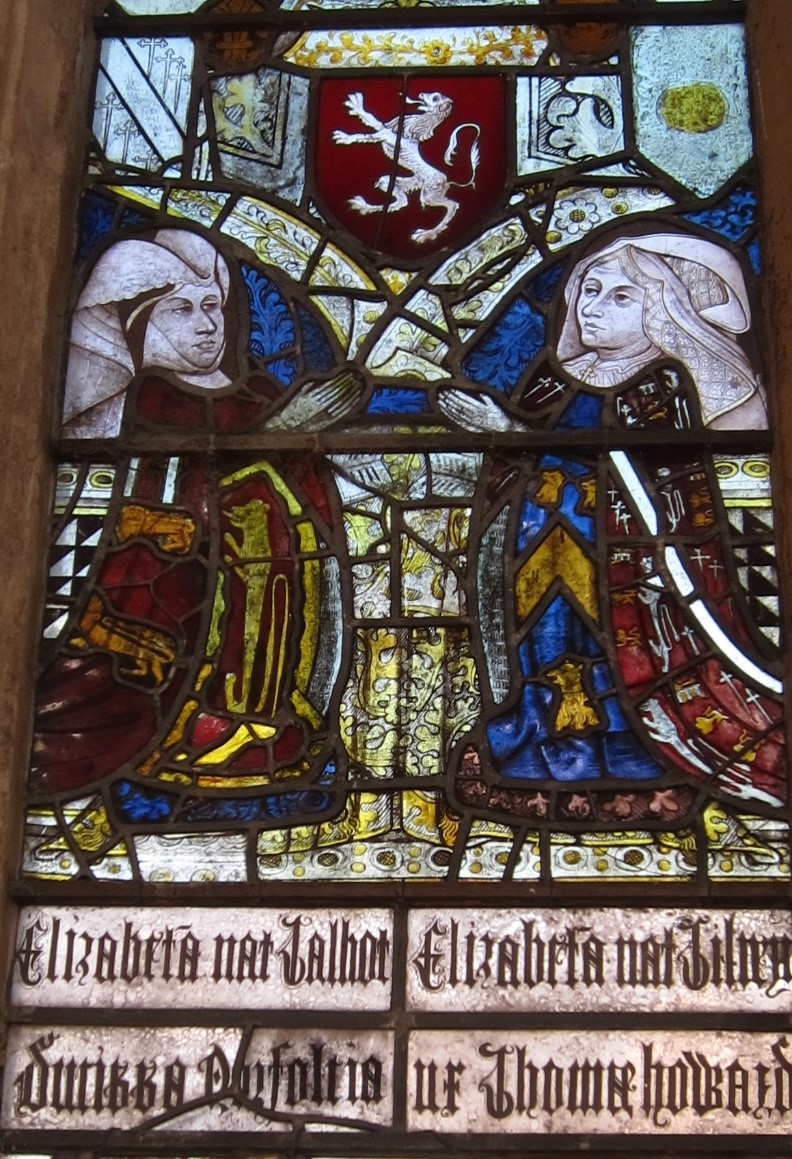Elizabeth Tilney
Elizabeth was the only surviving child of her father, a significant member of the Norfolk gentry. His death without sons left her heiress of some twelve manors. She was married, at about the age of twenty, to Sir Humphrey Bourchier. This was a very good match for Elizabeth – Sir Humphrey was the great-grandson of Thomas of Woodstock, Duke of Gloucester, and youngest son of Edward III.
The Bourchiers were supporters of York, but, despite fighting for the victorious side, Humphrey was killed at the Battle of Barnet on 14th April 1471. He was buried in Westminster Abbey, in the Chapel of St Edmund. In little over a year, Elizabeth had remarried, this time to Thomas Howard, son of Sir John Howard. On the face of it, this marriage was not so advantageous – the Howards were a wealthy Norfolk gentry family, although descended, via Margaret Mowbray, her new husband’s grandmother, from Edward I.
In 1483, however, the Howards took a massive step up. Sir John and Thomas were strong supporters of Richard III, who had declared the children of his brother, Edward IV, illegitimate, and taken the throne. One of Edward IV’s sons, Richard, was holding the lands of the Duchy of Norfolk in right of his deceased wife, Anne de Mowbray. Sir John was the heir-general of the de Mowbrays, and when Richard disappeared in June 1483 the Dukedom of Norfolk was conferred on Sir John. Elizabeth’s husband was now Earl of Surrey, and she was a Countess. It was with this rank that the couple attended the coronation, Elizabeth bearing the train of the new queen, Anne Neville.
Richard’s reign, however, was doomed, and, on 22nd August 1485 he was defeated at the Battle of Bosworth by the Lancastrian claimant, Henry Tudor, now Henry VII. Surrey was badly wounded, but not killed. He was imprisoned in the Tower of London, and the Norfolk lands confiscated (the Duke had perished in the battle). Elizabeth’s own lands were exempted from the sentence against her husband, but she had to be on her guard against attempts to seize them
Elizabeth and her children were now at the mercy of John de Vere, 14th Earl of Oxford, who, fortunately, treated them kindly. She wrote to John Paston on 3rd October 1485 that Oxford was ‘a very good and kind lord…to my lord and me.’ Nevertheless, there was little to live on, and her husband was still in prison. Elizabeth travelled to London, staying near St Katharine’s-by-the-Tower.
By early 1489, Henry VII had freed Surrey, restored his title, and some of his lands, and was prepared to give him the opportunity to prove himself, which he promptly did, scoring a number of victories in the intermittent warfare on the Scottish borders. Elizabeth remained in the south, and joined the household of Queen Elizabeth of York.
Elizabeth died on 4th April 1497 and requested burial in the Abbey of the Minoresses of St Clare, near Aldgate (site of the modern Minories in London).

In addition to the three children Elizabeth had by her first husband, she produced nine in her second marriage, of whom six lived to adulthood. Her daughter, Margaret Bourchier, Lady Bryan, was governess to all three of Henry VIII’s legitimate children.
Elizabeth had numerous grandchildren and later descendants who peopled the English court for the next century. Her grandchildren included the queens, Anne Boleyn and Katheryn Howard; Sir Francis Bryan, later Lord Lieutenant of Ireland; the poet, Henry Howard, Earl of Surrey; Mary Howard, wife of Henry VIII’s illegitimate son and Thomas Fiennes, Baron Dacre of the South (executed following the Pilgrimage of Grace).
In the following generations were Dukes of Norfolk, Earls of Suffolk, Dorset, Banbury, Berkshire and Essex. Amongst the famous women descended from later generations were Lettice Knollys, Countess of Leicester; Lady Penelope Devereux; Bess Throckmorton, Lady Raleigh and Lady Frances Howard, Countess of Somerset, convicted of the murder by poisoning of Thomas Overbury.
Elizabeth Tilney
Family Tree







